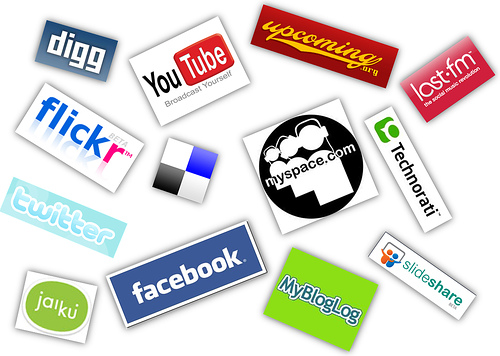
The government has just declared that anyone lacking the skills to produce at least $7.25 per hour for an employer has no right to work. How stupid.
The last thing anyone should want in a recession is barriers to employment. But that's what the government did by allowing an automatic increase in the minimum wage to take effect, raising it to $7.25 per hour. A higher minimum wage makes it harder for the least skilled to find employment simply because they aren't worth fully burdened cost.
Fully burdened? Don't forget the employer's share of payroll taxes, which includes social security, medicare, and unemployment taxes. And don't forget any benefits the employer voluntarily pays.
Arguments for a higher minimum wage center on "economic justice," which translates into justice for some at the expense of others. Other arguments are that people should be able to earn a "living wage." Still others claim the minimum wage needs to rise to account for the effects of inflation.
Why $7.25?
Let's buy the arguments. Let's say that it's unjust for people to earn less than a "living wage" and raise the minimum wage accordingly. However, if we're going to hike the mimimum wage, why stop at $7.25? That's not economic justice. If we're going to raise it, why not raise it to $20 per hour? Or $200?
Clearly, a $200 per hour minimum wage would be foolish. No one will pay $200 per hour for someone to flip burgers or greet people entering a store. But at what point is the minimum not foolish?
The fact is that the minimum wage is arbitrary at any level. No business is going to hire someone for $X per hour if the person can't generate at least $X per hour of value.
The Minimum Is Not Permanent
Politicans act like the minimum wage is permanent. Anyone earning it will always earn it. That's hardly the way it works. People work for lower wages while acquiring the skills and work history that enables them to increase their productivity and command greater wages in the future.
My first job involved working for a roofing contractor... during the summer... in Texas... at age 15... for $2 per hour. If there's ever a situation where a worker was exploited, paying a kid who was too young to work, wages below the minimum wage to shingle roofs in triple digit temperatures is it.
Yet I hardly felt exploited. I was thrilled to have a job and prove myself. Yet, my employer had to break the law to hire me and pay me what I was worth (and given my ineptitude, $2 an hour was generous).
By the end of the summer I turned 16 and managed to talk my way into a job in an air conditioned restaurant. Ahhhhhh!
Part of the reason I got the job was that I had demonstrated a willingness to work hard and reliability working as a roofer. Even so, I started at minimum wage. Fortunately, the minimum wage was low. If it had been a whole lot higher, the restaurant would have hired someone with more direct experience.
Even though I started at the minimum wage, I didn't stay there. Gradually I earned a small raise. It felt good. I was proud of my progression.
By forcing companies to pay a minimum wage, a whole class of lower skill workers will never be given the chance to learn a job and get better at it so they can earn more. Instead, they'll learn that there's little "economic justice" for the unskilled.
Inflation
Inflation is hardly a justification for the current hike in the minimum wage. Indeed, raising the minimum wage will cause inflation.
Two years ago, the minimum wage was $5.15 per hour. Today, it's $7.25. That's a 41% artificial, government imposed mandate. How is that not inflationary?
Raising the minimum wage also pushes up union wages. James Sherk, the Bradley Fellow in Labor Policy in the Center for Data Analysis at The Heritage Foundation, explains...
Unions campaign to raise the minimum wage at least in part because it enriches them. Raising the minimum wage makes unskilled workers more expensive for businesses to hire, and so hiring skilled and highly paid union members becomes a more attractive choice. This effect increases union members' earned income but reduces low-income workers' job prospects and income. That unions support raising the minimum wage is understandable, but antipoverty advocates should reconsider their support for a policy that hurts the very people they seek to help.
Unions are not altruistic. Belton M. Fleisher, in his book,
Minimum Wage Regulation in the United States, quoted union leader, Edward T. Hanley stating, "The purpose of the minimum wage is to provide a floor from which we can upgrade your compensation through collective bargaining."
The Minimum Wage is Price FixingIf a group of contractors got together in a town to set minimum prices levels in the name of "economic fairness," to ensure the biggest slug in town could make a "living wage," the contractors would be accused of price gouging. They would be guilty of a felony under the Sherman Act.
If price fixing is unacceptable, even illegal, elsewhere in society, why is price fixing for labor not only acceptable but Federally mandated?
JobsThe truth is the minimum wage kills jobs. Before the most recent increase, 33 states enacted minimum wage levels in excess of the Federally mandated minimum. As of June 2009, their average unemployment rate was 9.2%, compared to 7.9% for the states following the mandated minimum. The chart below (click it to enlarge) shows that 88% of states with unemployment levels of 11% or more exceeded the mandated minimum wage. By contrast, 64% of the states with unemployment less than 7% followed the Federally mandated minimum.

With overall teen unemployment more than 22% and black teen employment nearing 40%, this is the wrong time to raise the minimum wage. In the 1973 textbook,
Economics, the very liberal economist Paul Samuelson acknowledged, "What good does it do a black youth to know that an employer must pay him $2.00 per hour if the fact that he must be paid that amount is what keeps him from getting a job?"
According to David Neumark, professor of economics at the University of California, Irvine, "The best estimates from studies since the early 1990s suggest that the 11% minimum wage increase scheduled for this summer will lead to the loss of an additional 300,000 jobs among teens and young adults. This is on top of the continuing job losses the recession is likely to throw our way."
Frankly, the job destruction from labor price fixing has long been documented. In a Policy Analysis for the CATO Institute,
Matthew Kibbe wrote...
According to the 1981 Report of the Minimum Waqe Study Commission, the 46 percent rise in the minimum wage between 1977 and 1981 destroyed 644,000 jobs among teenagers alone. "The evidence is now in, and the findings of dozens of major economic studies show that the damage done by the minimum wage has been far more severe than even the critics . . . predicted." A 1983 survey, "Time-Series Evidence of the Effect of the Minimum Wage on Youth Employment," found that studies conducted between 1973 and 1983 generally agreed that a 10 percent increase in the minimum wage would result in a 1 to 3 percent reduction in teenage employment. Given these findings, the proposal to raise the minimum wage by nearly 40 percent could result in a 4 to 12 percent drop in the employment of teens.
How Does This Affect You?Since most contractors pay plumbers, technicians, and other field service personnel far more than the minimum wage, many believe it won't affect them. But it does. Aside from the general inflation question, it limits marketing opportunities and limits the future labor pool. It raises the cost to hire a CSR to make happy calls. It raises the cost of a parts runner. It raises the cost of hiring unskilled helpers to learn on the job.
Moreover, it's just bad economics that will create more headwinds for small business to slug through while we create a recovery in spite of govenment actions. This means you're going to have to work harder and smarter in your marketing and all other aspects of your business. Keep reading this blog and I'll offer suggestions and examples from leading contractors.
.gif)
Download this FREE HVAC industry recruiting brochure from the Service Roundtable's Free Stuff page. Check out the other Free Stuff from the Service Roundtable.








































